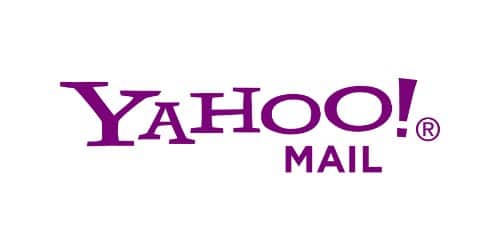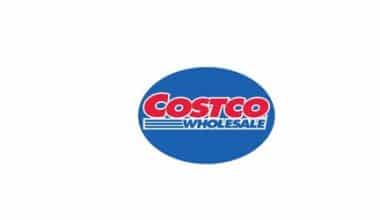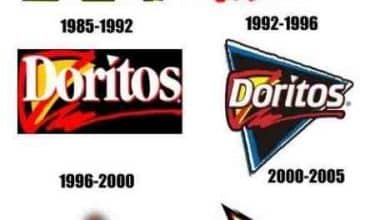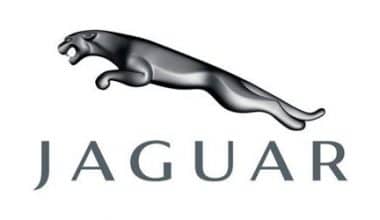This company’s twenty-year history is littered with both successes and setbacks. The Yahoo! brand has established itself. But the company’s stock value fell sharply around the turn of the century, like many others, which kept it from fully recovering. Still, Yahoo! Mail has a lot of users around the world (225 million as of 2020), so it can compete with Gmail. But unlike other email services, Yahoo! Mail users can access Yahoo! Mail through their Gmail, AOL, or Outlook accounts and manage multiple accounts. For the purpose of this article, we will go through a little bit of history and the evolution of the Yahoo Mail Logo.
Yahoo Mail Logo: Brand Overview
Yahoo Mail is an email service launched in 1997 by the world-famous corporation. It is currently used by around 200 million individuals worldwide. Clients are guaranteed complete security when transmitting communications. Every day, the service system handles billions of letters. This project is popular among the target population because of the well-known brand and the simple user interface, which allows you to start doing activities right away.
Evolution of the Yahoo Mail Logo
The Yahoo Mail service logo was first released in 1997 and has been modified four times since then. Overall, there haven’t been too many changes because the project managers chose a great design that helps people recognize the brand.
1997 – 2002
The first iteration of the service logo, like future upgrades, featured a pretty simple composition. It was nothing more than the name Yahoo Mail. In certain cases, the logo also included a symbol showing a mail envelope or box. “Yahoo” was written in a bold, red serif typeface. Despite the fact that all of the symbols were horizontal, they were not on the same line. This gave the illusion of “jumping capital letters.” This effect was designed to make consumers feel good. As a result, “Mail” was portrayed in a more easygoing manner. This word was written in a small typeface with no serifs. This word’s characters are all in blue.
2002 – 2009
At this time, several graphic components were not employed in conjunction with the logo. The appearance was altered by enhancing the letter quality. The word “Yahoo” has a faint shadow, giving the impression of a three-dimensional inscription. The bright red color seems to be more successful than the prior variant. “Mail” was then done in a classic bold font with lowercase letters. The predominant color was dark gray. So, it was decided that the word “Yahoo” should come before the prefix. This is because the company wanted the name of its brand to be the first thing that customers noticed.
Read Also: YOUTUBE LOGO: How Was Youtube Started?
2009 – 2013
The first big alterations were made with the logo update in 2009. It’s all about the color palette. If “mail” was repeated over and over in the old logo, the main word “Yahoo” would be bright purple. When this version arrived at the customer’s site, it became the basis for future color palettes. The deep purple color of the word drew attention to the project’s wisdom and promise, as well as its focus on the consumer. In this scenario, the technique of writing “Yahoo” was identical to the original version from 2002. That is, the image’s bulkiness was reduced. The icon for the mobile app was a white envelope.
2013 – 2019
It was decided to go back to using volumetric letters in the word “Yahoo.” In addition, the writing style shifted dramatically. All of the letters got more constrained, and the edges became less distinct. The letters in the company’s name shimmered together thanks to a purple gradient. As a consequence, users appreciated the unique and appealing logo, and it was actively utilized for the next six years. This inscription’s font struck out for its thin, straight lines and split ends. “Mail,” on the other hand, remained identical to the previous edition but grew significantly in size, only slightly trailing “Yahoo.”
2019 – Today
The font of the logo was the main focus of 2019 revamp. As a result, both words in the brand name are now written in purple. “Yahoo!” was given a darker hue, while “mail” was given a softer hue. As a result, users saw bold lowercase letters, particularly where the “!” symbol was prominent. It leaned in toward the person who was looking at it. Yahoo Mail users appeared to prefer the bold sans serif typeface with lowercase letters. The mobile versions had the same white mail envelope as the icon, and the name of the company was written below it.
Yahoo Mail Logo: Font and Colors
With each logo modification, the font style in the title “Yahoo Mail” has changed. The inscription given here is in a traditional bold typeface with rounded corners and lowercase letters in the most recent variation.
The color scheme progressed from red-gray to purple. Purple has become the most prominent hue, and the email service has used it since 2009. Playing with colors and utilizing a gradient are both beneficial. The logo is nice to look at because it draws in both current and possible site users.
History
Beyond the logo, let’s look at a brief history of the Yahoo Mail brand itself.
Between 1997–2002
Yahoo! agreed to co-brand its white pages with the internet communications business Four11. Marvin Gavin, the director of international business development at Four11, stated,
“We had a preconceived notion that we would be acquired by Yahoo.
They were more innovative than Microsoft. “We had a terrific cultural fit, and it made perfect sense.” In the end, Yahoo! paid $96 million for Four11. The company’s RocketMail webmail service, which came out in 1997, was a big reason why Yahoo bought Four11. Yahoo! made the announcement on October 8, 1997, just before Yahoo! Mail went live.
Because, as Healy stated, Yahoo! preferred acquisition above internal platform development, Hotmail was gaining hundreds upon thousands of new users every week. We conducted research. It would have taken us four to six months to create, and by then, so many users would have signed up for an email account. The market’s speed was important.”
Many Rocketmail users found the shift to Yahoo! Mail difficult. On March 21, 2002, Yahoo stopped giving free software client access and started charging $29.99 per year for its Mail Forwarding Service.
“Since they first came out in February 1999, Yahoo!’s paid services have been very well received by our active registered users, and we expect this to continue to grow,” said Mary Osako, a Yahoo! spokesperson.
2002–2010
The Yahoo! network was gradually revamped in 2002. The company’s website was updated on July 2, and it was stated that Yahoo! Mail and other services would be overhauled as well. Along with the new look, there were to be new features like DHTML drop-down menus, different category tabs, and a new color scheme that users could change. Geoff Ralston, senior vice president of Yahoo! Network Services, remarked that
Yahoo! Mail Plus is part of Yahoo’s strategic initiative to provide premium services that are innovative, dependable, and relevant to consumers. Yahoo! Mail has gone from having one million users to having tens of millions of users in just five years. This shows how important email has become to people’s daily lives. Yahoo! Mail Plus continues to show leadership and creativity by giving customers the most complete and powerful email service in the industry.
In 2007, Yahoo! Messenger chat integration was in beta in the Yahoo! Mail webmail interface.
On July 9, 2004, Yahoo! bought Oddpost, a webmail service that looked like a desktop email client. Oddpost had features like drag-and-drop, right-click menus, RSS feeds, a preview window, and faster response times by caching emails. Many of the features were incorporated into a new version of Yahoo! Mail.
Competition
Google debuted its Gmail service with 1 GB of storage on April 1, 2004, however, Gmail’s invitation-only accounts kept the other webmail providers at the forefront. In response, most major webmail services, including Yahoo! Mail, expanded inbox storage. Yahoo! originally announced 100 MB of storage for standard accounts and 2 GB of storage for premium subscribers. However, Yahoo! Mail quickly expanded its free storage quota to 1 GB, finally providing unlimited storage. From March 27, 2007, to October 8, 2013, Yahoo! Mail offered free unlimited storage.
2011–Present
Yahoo! demonstrated a new mail software to reporters on September 17, 2010. The 2011 release, codenamed “Minty,” was announced on September 16, 2010. It included a redesigned interface, better performance, better Facebook and Twitter integration, the ability to watch YouTube videos directly from email, and better search. On October 26, 2010, the public beta period began. The redesigned Yahoo! Mail interface became the default interface in May 2011. When the new Yahoo! Mail interface had to be used, people found it hard to type quickly, which was not what Yahoo said would happen.
As of September 12, 2011, Yahoo! had provided no solution to the problem. Users were also unable to paste textual email addresses into the sender field. The old version’s “secondary” addresses were no longer usable in the current version. The new interface took precedence over the browser’s right mouse button (making functions such as opening mails in new tab windows unavailable).
Yahoo! revamped the site in 2013 and lost key functionality, including the ability to open several emails in tabs at the same time, sort by sender name, and drag emails to folders. The new email interface was made to make it easier to use on mobile devices, but it was criticized for being hard to use on a desktop.
Many users protested the unexpected nature of the changes, with 100,000 votes and over ten thousand posting on an internet post requesting Yahoo! to restore mail tabs. Due to a problem that was caused by the redesign, some users couldn’t get into their accounts for several weeks.
Read Also: NETFLIX LOGO: Evolution & Tips on Digital Branding
In December 2013, there was a big problem with Yahoo! Mail. About one million users, or one percent of the site’s total users, couldn’t get to their emails for several days. Then, Yahoo! CEO Marissa Mayer apologized publicly to the site’s users.
On April 18, 2013, China Yahoo! Mail officially confirmed its closure. Users were told that until they switched to the American version of Yahoo! Mail, they couldn’t get to their emails, contacts, or account settings. Individuals who created China Yahoo! Mail accounts during the Alibaba acquisition had to create new accounts with new usernames.
In January 2014, hackers got a hold of a large number of usernames and passwords after a security breach that Yahoo! thought happened on a third-party site. Yahoo! notified the affected individuals and asked them to change their passwords.
Yahoo! changed its mail service in October 2015 to make it look “more subtle” and give mobile users more options. The Yahoo! Account Key, which can be used on a smartphone instead of a password, was also released at the same time.
Yahoo! revamped the web interface with a “more basic” look in 2017, and included the ability to personalize it with multiple color palettes and layouts.
Yahoo! launched a feature to watch NFL games in 2020.
Controversies
Shi Tao Arrested
In 2004, the Hong Kong office of Yahoo sent technical information about journalist Shi Tao’s account to Chinese authorities. Shi Tao was later sentenced to ten years in prison for “leaking state secrets”
Reporters Without Borders scolded Yahoo! for acting as a “police informant” to make more money.
The United States Congress launched a probe of Yahoo’s handling of the case in August 2007.
Jerry Yang, the founder of Yahoo!, testified before Congress. On November 6, 2007, a congressional panel called Yahoo! “at best, inexcusably incompetent” and “deceptive” for not giving the House Foreign Affairs Committee all the facts the year before.
Representative Tom Lantos referred to the company’s leaders as moral “pygmies.”
Yang said that Yahoo! was no longer in charge of its business in China and that the company was working with human rights groups to create an ethical code for tech companies.
Yahoo! executives said in a February 2006 hearing that they had received no information regarding the probe. Several months later, it was uncovered that the document sent by the Beijing State Security Bureau to Yahoo! China on April 22, 2004, said that “Your office is in possession of the following items relevant to a case of alleged illicit transmission of state secrets to foreign firms.”
Yahoo! reached an unspecified settlement with Shi on November 13, 2007. In September 2013, Shi was freed from prison.
Username Suspensions
On February 20, 2006, Yahoo! Mail announced a prohibition on the term “Allah” in email identities, both independently and as part of a user name like Linda.Callahan. On February 23, 2006, the restriction was removed shortly after it was announced. Yahoo! also issued the following statement in conjunction with this action:
We regularly look for signs of abuse in registration usernames to help stop spam, fraud, and other bad things from happening. A small number of people signed up for Yahoo IDs with specific settings in order to spread hate. They then used those IDs to post content that was hurtful or threatening to other people, which is against Yahoo's Terms of Service. One of the words used for these reasons was "Allah," which was sometimes used in a slanderous way. We made sure our users were safe by not letting them use the word in their Yahoo! usernames. We just re-evaluated the term "Allah," and users can now register for IDs using it because it is no longer a prominent target for abuse. We keep an eye on this kind of activity and will keep making changes to our registration process to make sure our customers have a great time.
Exploit
An Egyptian hacker offered a Yahoo! Mail exploit for $700 in November 2012, allowing hijackers to hack Yahoo! Mail user accounts and redirect users to a malicious website. Cross-site scripting was employed in the assault, allowing hackers to grab cookies. In January 2013, hacker and security researcher Shahin Ramezany discovered another DOM-based XSS flaw that exposed 400 million users.
Deleted Accounts
Yahoo! terminated accounts that had not been accessed for more than 12 months in 2013 and assigned their names to other users. This included accounts that had configured email forwarding to other accounts but did not notice or act on the message in order to keep their account. As a result of the fallout from this move, several users lost access to accounts on other services because their email resets were no longer routed to them, but to the new owner of their former account.
Phishing Attempt
Since 2007, New Zealand Telecom has used Yahoo! as its email provider, which came under fire in early 2013 as the country was attacked by the largest spam and phishing attack in history. Telecom and Yahoo! instantly reset the passwords of “about 60,000” users. Despite the issue, Telecom said in April that it would continue to use Yahoo! as an email service.
Account Thievery
On October 3, 2017, Yahoo! reported that the previously publicized August 2013 account theft had affected all Yahoo! user accounts (roughly 3 billion). This material supplements the December 14, 2016, statement that more than 1 billion user accounts were compromised in a 2013 breach. In September of that year, Yahoo! disclosed that an additional 500 million user accounts had been compromised in 2014. Years before their original revelation, the firm was reported to have uncovered the hack that affected hundreds of millions of accounts.
Email Content Scanning Automation
In contrast to its main competitors Gmail (which discontinued the practice in late 2017) and Outlook.com, the contents of Yahoo! Mail messages are examined for the sake of targeted advertising (which did not employ the practice).
Sharing Content With the National Security Agency
According to Reuters, Yahoo! implemented a feature that scans all incoming emails for specified keywords and shares email content in real-time with the US National Security Agency.
What Is the Logo of Yahoo Mail?
Only the 1995 version of the Yahoo logo featured the icon. The bright logo is made up of a light blue circle and a yellow stylised letter “Y,” which together resemble the shape of a person holding his hands in the air. The exclamation point is integrated into a purple custom typeface for the wordmark.
How Can I Open My Yahoo Email Account?
To access your Yahoo account, visit www.yahoo.com.Followed by clicking the Sign In option, enter your email address and password. The inbox and other functions are accessible from this point. They can access Yahoo.com from any computer, whether it’s a desktop, laptop, or mobile device.
Is Yahoo Mail an Email Account?
In addition to providing email hosting, both Gmail and Yahoo Mail also offer desktop apps. However, you may access your Yahoo Mail or Gmail inbox with any third-party email client, such as Outlook or Apple Mail.
What Is Yahoo Called Now?
Formerly known as Verizon Media, the company that owns Yahoo and AOL has changed its name to just “Yahoo.” After initially asking for roughly $9 billion, Verizon said in May that it would sell the assets to Apollo Global Management for a reported $5 billion.
Related Articles
- Yahoo Finance: News, Net worth, how they started and API Guide
- STANDARD MAIL: How Long Does Standard Mail Take
- BEST EMAIL SERVICE FOR BUSINESS(+ Free Options)
- Business Email Address: How To Set Up Business Email
- YAHOO LOGO: Meaning, Why Yahoo Changed Their Logo and History






